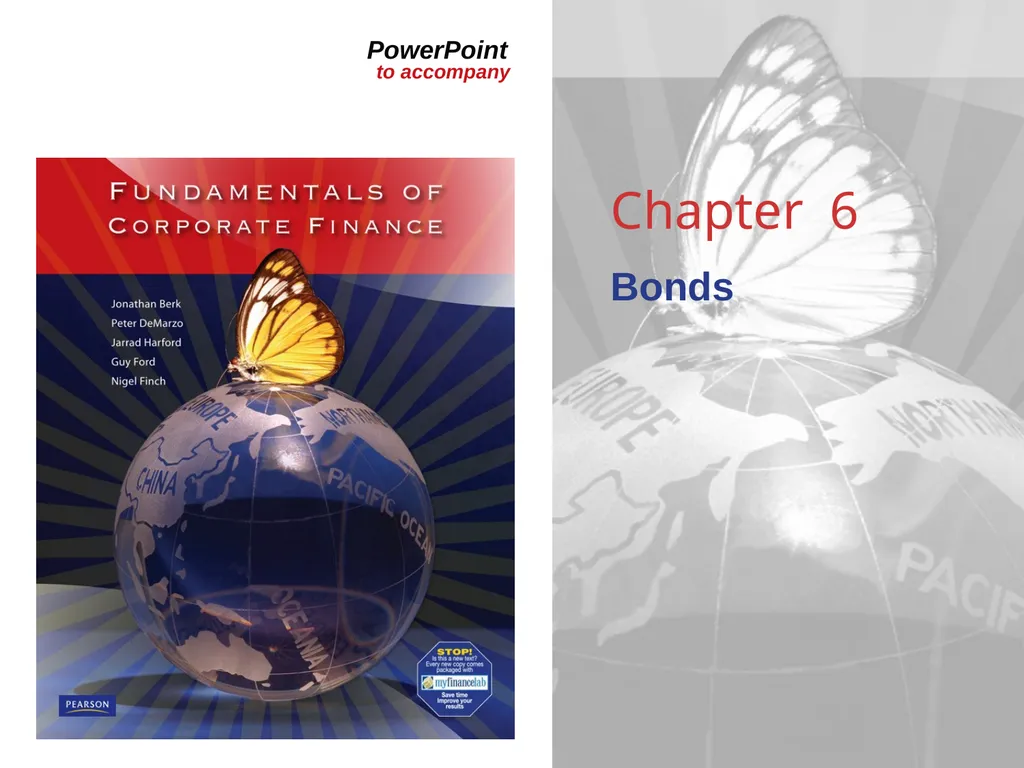Chapter 6 Bonds 6.1 Bond Terminology A bond is a
Author : marina-yarberry | Published Date : 2025-05-16
Description: Chapter 6 Bonds 61 Bond Terminology A bond is a security sold by governments and corporations to raise money from investors today in exchange for promised future payments Payments on the bond are made until a final repayment date called
Presentation Embed Code
Download Presentation
Download
Presentation The PPT/PDF document
"Chapter 6 Bonds 6.1 Bond Terminology A bond is a" is the property of its rightful owner.
Permission is granted to download and print the materials on this website for personal, non-commercial use only,
and to display it on your personal computer provided you do not modify the materials and that you retain all
copyright notices contained in the materials. By downloading content from our website, you accept the terms of
this agreement.
Transcript:Chapter 6 Bonds 6.1 Bond Terminology A bond is a:
Chapter 6 Bonds 6.1 Bond Terminology A bond is a security sold by governments and corporations to raise money from investors today in exchange for promised future payments. Payments on the bond are made until a final repayment date, called the maturity date of the bond. The time remaining until the repayment date is known as the term of the bond. 2 6.1 Bond Terminology Two types of payments The principal or face value (par value) of a bond is the notional amount we use to calculate the interest payments, which gets repaid at maturity. Bonds also promise additional payments called coupons, which are paid periodically (for example, six-monthly) until the maturity date of the bond. 3 Coupon payment The amount of each coupon payment is determined by the coupon rate of the bond. The coupon rate is expressed as an APR, so the amount of each coupon payment, CPN, is: (Eq. 6.1) 4 6.1 Bond Terminology FORMULA! Example: A $1,000 bond with a 10% coupon rate and six-monthly payments will pay coupon payments of: 5 6.1 Bond Terminology 6 Table 6.1 Review of Bond Terminology 6.2 Zero-Coupon Bonds Bonds without coupons are called zero-coupon bonds and are commonly known as Bills Zero-coupon bonds have only two cash flows—the payment for the bond at current market price and the face value at maturity. Example: A one-year zero-coupon bond with a $100,000 face value has an initial price of $96,618.36. If you purchased this bond and held it to maturity, you would have the following cash flows: 7 6.2 Zero-Coupon Bonds Although zero coupon bonds pay no direct interest, investors are compensated for the time value of money by purchasing the bond at a discount to its face value. Prior to its maturity date, the price of a zero-coupon bond is always less than its face value. That is, zero-coupon bonds always trade at a discount (a price lower than the face value), so they are also called pure discount bonds. 8 6.2 Zero-Coupon Bonds Yield to maturity of a zero-coupon bond The Internal Rate of Return of an investment in a bond is called the yield to maturity (YTM). Yield to maturity of an n-year zero-coupon bond: (Eq. 6.2) 9 FORMULA! The yield to maturity of a bond is the discount rate that sets the PV of the promised bond payments equal to the current market price of the bond.














